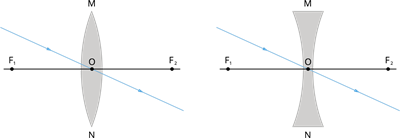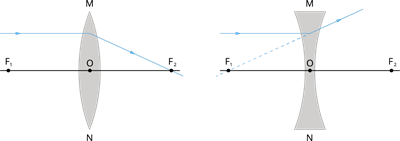
PUMPA - SMART LEARNING
எங்கள் ஆசிரியர்களுடன் 1-ஆன்-1 ஆலோசனை நேரத்தைப் பெறுங்கள். டாப்பர் ஆவதற்கு நாங்கள் பயிற்சி அளிப்போம்
Book Free DemoGeneral rules for making ray diagrams
When an object is placed in front of a lens, the object's light rays strike the lens. The position, size, and nature of the formed image can only be understood if certain basic rules are followed.
Rule-1:
When a ray of light strikes the convex or concave lens obliquely at its optical centre, it continues to follow its path without any deviation.

Rule-2:
When rays parallel to the principal axis strikes a convex or concave lens, the refracted rays are converged to (convex lens) or appear to diverge from (concave lens) the principal focus.

Rule-3:
When a ray passing through (convex lens) or directed towards (concave lens), the principal focus strikes a convex or concave lens, the refracted ray will be parallel to the principal axis.